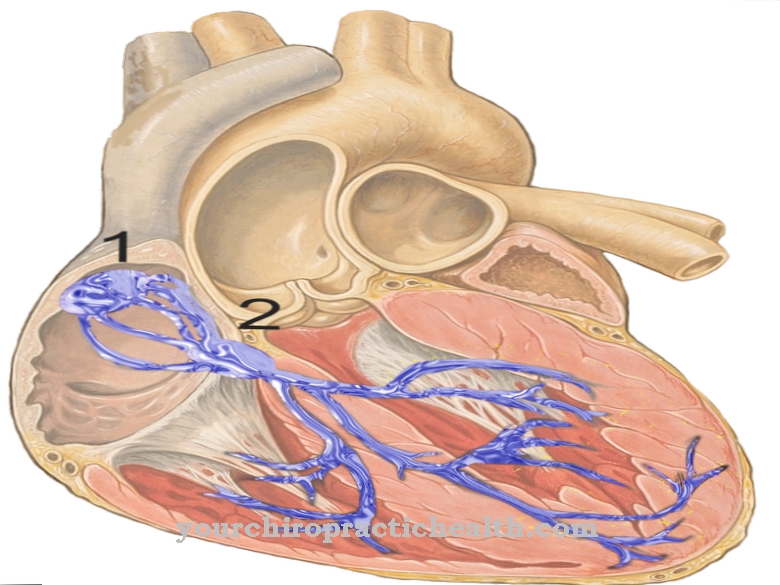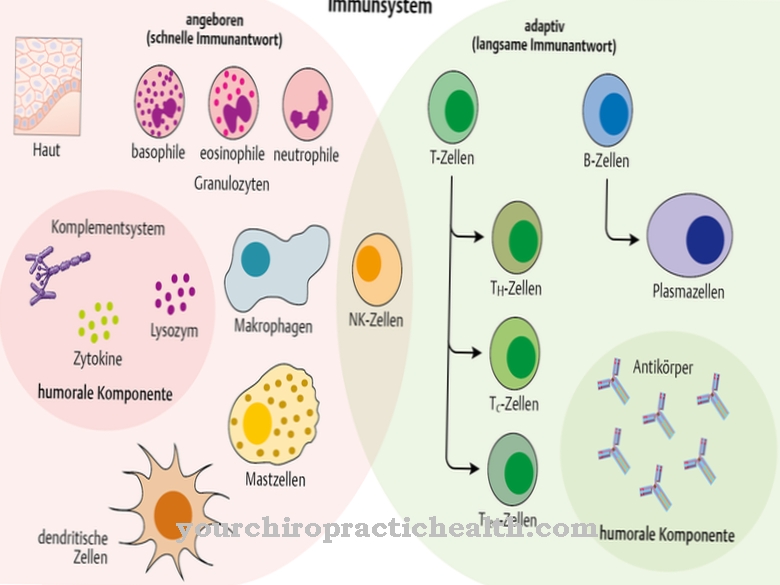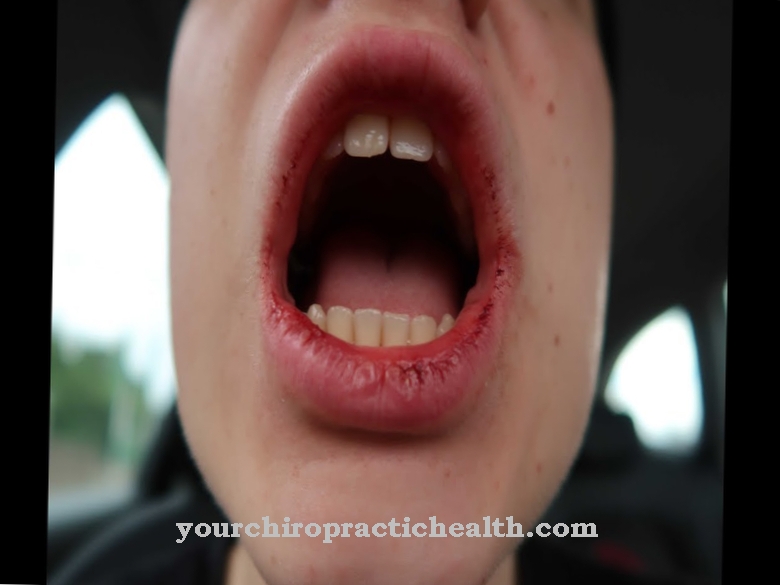Ball joints are a form of real joints in which the joint head has a spherical shape. The head rests in the socket according to the key-lock principle and has four-axis mobility. Osteoarthritis and arthritis are among the most important diseases of the joints.
What are ball joints?
The human body has 143 joints. Movable connections between colliding bones are referred to as such. Real joints have a so-called joint space and are therefore to be distinguished from fake joints without a joint space. Depending on the location, there are functionally different requirements for a joint. Depending on the functional requirements, the real joints of the human body have different shapes.
A shape variant of the real joint is the ball joint. In this type of joint, one of the joint surfaces involved has a spherical shape. The second joint surface is the joint socket, into which the spherical joint head engages according to the hand-in-glove or key-lock principle. The hand-in-glove or key-lock principle refers to the complementary structure of the structures involved and is associated with a consistent fit. Instead of translatory movements, only rotary movements are possible in the ball joint. The hip joint is one of the most important ball joints in the human body. The shoulder joint and the ankle joint also correspond to a ball joint.
Anatomy & structure
All so-called diarthroses or real joints have a gap between their joint surfaces, which is known as the joint gap and is covered by cartilage. As a functional unit, the joint with its individual components in real joints lies in a joint capsule consisting of an outer fibrous membrane in the form of tight connective tissue and an inner synovial membrane made of epithelial-like connective tissue associations.
The joint capsule closes the joint cavity without gaps and rests loosely on the individual joint bodies. The outer fibrous membrane of the joint capsule is reinforced by joint or capsular ligaments. Joint ligaments within the joint cavity each have a layer of the synovial membrane and are thus connected to the joint capsule, which contains so-called synovial fluid or synovia with a viscous consistency.
As a real joint, the ball joint fulfills all of the joint properties mentioned. The joint partners of ball joints consist of an approximately spherical joint head and a complementary shaped joint socket that envelops the joint head. The nut joint is a special form of the ball joint. With this type of joint, the joint socket encompasses the head beyond its equator.
Function & tasks
Joints connect bones to one another in a flexible manner. As a result, they perform different functions. On the one hand, they have a stabilizing effect and, on the other hand, they give bones a certain degree of mobility, which can be performed via one or more axes. The ball joint is basically a multi-axis joint.This means that its axes of movement encompass at least two levels. This means that at least four different types of movement are possible in most ball joints.
As a special form of the ball joint, the nut joint differs from the conventional ball joint in terms of mobility. The range of motion in the nut joint is less than in a typical ball joint. For example, the amplitude of the hip joint is limited in mammals because it is a nut joint in the narrower sense.
In every ball joint, the center point of the joint head represents the pivot point of the joint body. The ball joint enables essentially three axes of movement for any form of movement. Its three degrees of freedom enable the joint to move in all three spatial planes, for example abduction and adduction or extension and flexion. When it comes to the anatomy and function of ball joints, there is often talk of unlimited mobility. In practice, however, the mobility of the ball joint is restricted by the surrounding joint capsule and its ligaments, which require a certain amount of guidance.
Diseases
Ball joints can be impaired in their function by congenital deformities as well as acquired diseases. In the case of congenital hip dysplasia, for example, the joint head does not fit perfectly into the socket. The hand-in-glove principle is thus disturbed, which can be associated with congenital hip dislocation (hip dysplasia) or the tendency towards hip dislocation.
Osteoarthritis or arthrosis is one of the most important acquired diseases of ball joints. Due to age, ball joints are affected by a certain amount of wear, which mainly affects the cartilage. If the wear and tear exceeds the age-physiological level, it is called osteoarthritis. In the hip joint in particular, osteoarthritis is favored by being overweight, since the additional weight causes increased stress on the hip every day. Even people of normal weight can overload their ball joints, for example with competitive sport or other regular overloads through monotonous movements.
Other risk factors for osteoarthritis are misalignments, such as those present from birth or from fractures. In osteoarthritis, the cartilage breaks down until the joint becomes stiff and loses its original range of motion. For example, many people with osteoarthritis of the shoulder joint are no longer able to move their arm over their head. In the process, the meeting bone ends rub against each other without any protective layer, wear off and cause pain. Osteoarthritis in the early stages is characterized by pain dependent on exercise. After a certain period of time, this stress-dependent pain spreads to the rest phases.
Arthritis must be distinguished from osteoarthritis. This is an inflammation that can in principle affect all types of joints and, in addition to joint pain, causes swelling and redness. Arthritis in the ball joint can also be caused by overload, but it can also be promoted by infections. Chronic arthritis favors the later development of osteoarthritis.
























.jpg)



